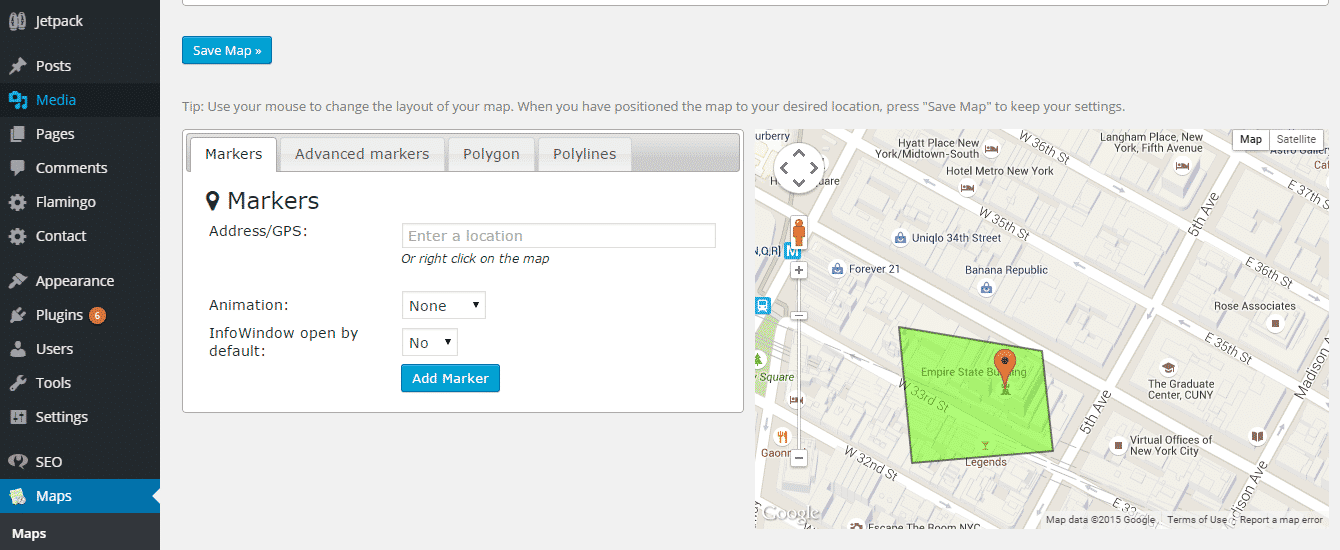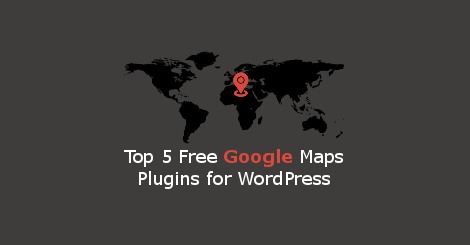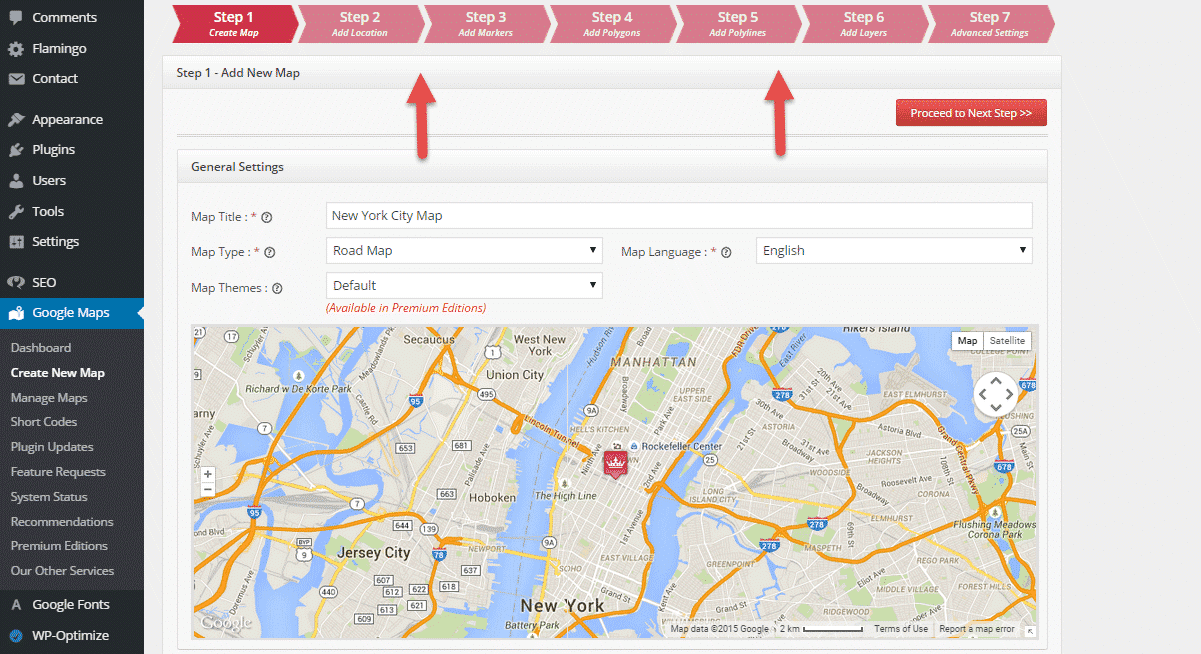If you’ve been following along with this particular series, then you’ve got a template setup and ready to begin displaying Google Maps in WordPress.
The Google Maps Multiple Locations and Store Locator WordPress Plugin allows users to manage locations and supports a store locator finder using Google Maps. Admin can include location description, zip search, customized markers, tooltip support and images for each individual location. The Google Maps WD Free WordPress plugin is a straight forward and intuitive plugin to add Google maps to any WordPress website. Just install the plugin and start building your maps. The plugin supports multiple locations, related/categorized locations, map layers, marker, map pin links, directions and more. Find local businesses, view maps and get driving directions in Google Maps. This is a great plugin to insert Google maps on a website. It has a lot of features especially to adjust the design. You can create different maps, markers and themes and adjust all colors in the map, set the controls to handle the map like zooming, map types, fullscreen and streetview and much more.
For whatever reason, if you’ve just stumbled across this series, then I’ve shared a basic introduction of the topic as well as how to setup a template within Twentyfifteen in WordPress 4.2.2 or how to display a map.
Those particular articles were a little longer than I usually like to share for posts like this, but I needed to get a few things setup before actually diving into the main points of this series.
Case in point: In this post, I’m primarily going to be talking about how to communicate with the Google Maps API to simply display a map – that’s it. Nothing more. Sure, there’s a lot more that can be done, and I plan to cover a lot of that material, but for now we just need to get a map displaying in our template.
Google Maps in WordPress
Assuming that you’ve followed the tutorial thus far, the primarily thing that I’m looking to cover in this post is to display a map within the context of our template.
I’ll walk through how I do it and then feel free to experiment with some of the parameters so that you can get a handle for how to tweak the map to your desire as you’ll likely need to make said adjustments in actual, real-world projects.
Anyway, the first thing that we need to do is to introduce a container that will, y’know, contain the map. This is as simple as adding a simple div element to the template:
Next, we need to introduce some JavaScript to the template. To do this, we need to make sure that it’s placed after the script import that was added in the previous article. This is because that library is a dependency on the JavaScript that we’ll be writing.
First, I’ll share the code, then I’ll explain what it’s doing after that:
In this gist, we’re setting up an event handler as defined within the Google Maps API such that when the window object loads, it will call our custom function maps_results_initialize.
Within that function, we’re making a call to the Google Maps API to create a Map object that will create a map zoomed at the ‘7’ level (which is an arbitrary number I selected for this demo), centered with the latitude and longitude coordinates of Atlanta, Georgia.
Now load up the template in your browser. You should see something like this:
Oops. Nothing’s changed. So what gives? We actually have to explicitly specify the dimensions of the canvas in which the map is being drawn.
To say that this doesn’t look as nice as we’d like is an understatement, right? I mean, it doesn’t look like anything. We can improve this a little bit with CSS.
Remember, as mentioned in a previous post, the way in which I’m developing this template right now is not what I recommend as it relates to good web development practices – I’ll have an article at the end that walks through the process of refactoring later in the series (after all, this is how development often goes, but I digress).
Here is a little bit of CSS to improve the presentation of the map:
Okay, with that done, let’s refresh the page and see what we end up with:
Much better, right? We’ve got the map displaying, filling up the width of the container, and centered on the center for which I’ve selected (remember to read the code comments!)
Moving On To Markers
Okay, at this point, the main goal has been achieved – we’ve got the Google Maps JavaScript library included and we’re displaying a Map. Sure, there are some additional changes that we could make in terms of, say, a zoom level or a position or where the map is centered, but these are all things that could be changed as an exercise on your own time.
After all, what are API Docs for?
Download streamlabs obs mac. Regardless, if you have questions, feel free to leave questions in the comments. Other than that, I’ll continue moving forward with the next article by adding content for how to add a marker to the map.
A Word About Multiple Markers
I’ll also have a short discussion on how to add multiple markers to a map as this is something that I often see tripping up developers. Or maybe it was just me.
Either way, there’s a process that we can follow that will address this and we’ll be covering this in the upcoming parts of the series.
Series Posts
Most people that use the Internet are familiar with Google
This plugin from CreativeMinds is $29 for one website and $59 for up to five websites. This Google Maps location plugin also has extensive support and documentation, as well as several helpful addons.
Map Locations and Store LocatorThis plugin lets users manage locations and supports location finder using Google Maps. Each individual location includes description, points of interest and images. Build a wordpress business location directory to support your business mapping requirements.[ Video] [ Userguide]Add to Cart
What You Can Do With a Plugin
In the case of the Google Maps Multiple Locations Plugin, you can:
- Mapping – Use Google Maps and Google Maps integration to navigate to add your location.
- Customize the Map – Reveal an interactive map with fully customized icons for all locations.
- Store Locator Solution – Use the custom map to create store map for a specific area.
- Advanced Search Options – Search map locations by keyword, category, address or even by distance using zip codes for multiple locations.
How To Show Maps of Locations With WordPress
To integrate Google Maps on your WordPress website, you will need several API [Application programming interface]
To overcome this, it’s important to check out why. There may be a billing issue, where the billing is invalid or it has been enabled. Having billing information on file has been a requirement for anyone using the Places API since July 2018.
Most services are available for free with limited use, although there is a tiered pricing system. The usage limit of the Google Map you are accessing may be exceeded as well. If there is still a problem with the API key, you should redo the steps for installing or contact support.
Conclusion
Having Google Maps enabled on your WordPress website is a huge advantage to attracting more customers both locally and digitally. Having map locations including custom location markers for each store, store location information, descriptions, images, feedback and more will visually improve your website and successfully alter your search engine ranking.
Enabling Google Maps on your WordPress website is also a simple process. The key factor here is to have the correct API keys enabled, so your WordPress website can access the information it needs from Google Maps to properly display location information.
The Google Maps Multiple Locations plugin from CreativeMinds has many useful features for displaying locations on a map and including detailed information for potential customers. This locations plugin easily integrates with Google Maps and there is also extensive documentation for installation and usage.
TwitterFacebookLinkedinEmailSuggested Blog Posts
Top 9 Essential WordPress Plugins (2021 Guide)
9 Top Monetization WordPress Plugins Every Business Needs
9 Essential eCommerce Website Features Your Store Must Have


6 Best WordPress LMS Plugins to Create and Sell Online Courses (2021)
 How to Make Your Website More Accessible (5 Simple Steps)
How to Make Your Website More Accessible (5 Simple Steps) Wordpress Embed Google Map
7 eCommerce Pricing Strategies Every Online Seller Should Know
5 Top eCommerce Trends 2021 (with Actionable Advice)
Wordpress Google Maps Location
Online Shopping Statistics You Need to Know (2021)
